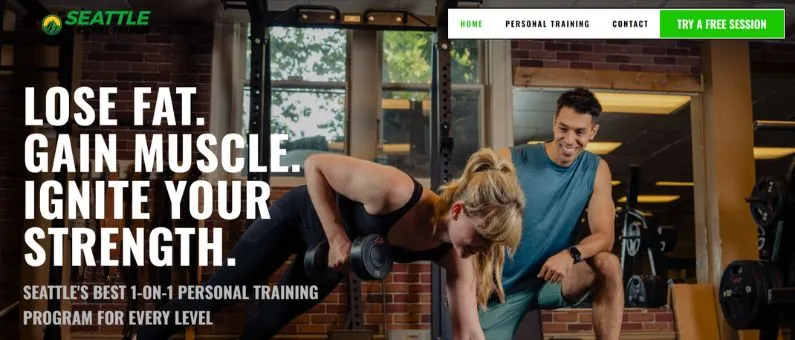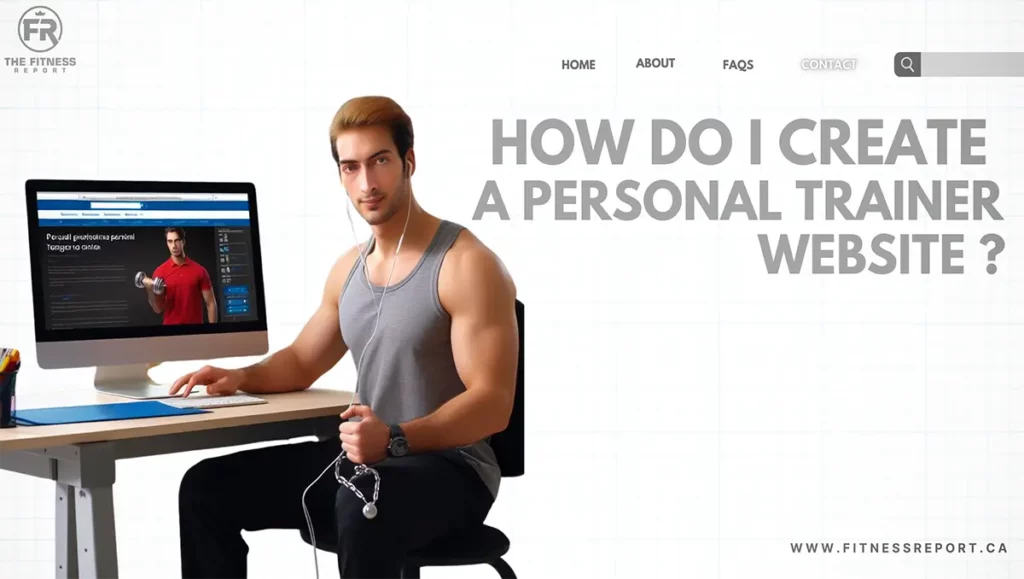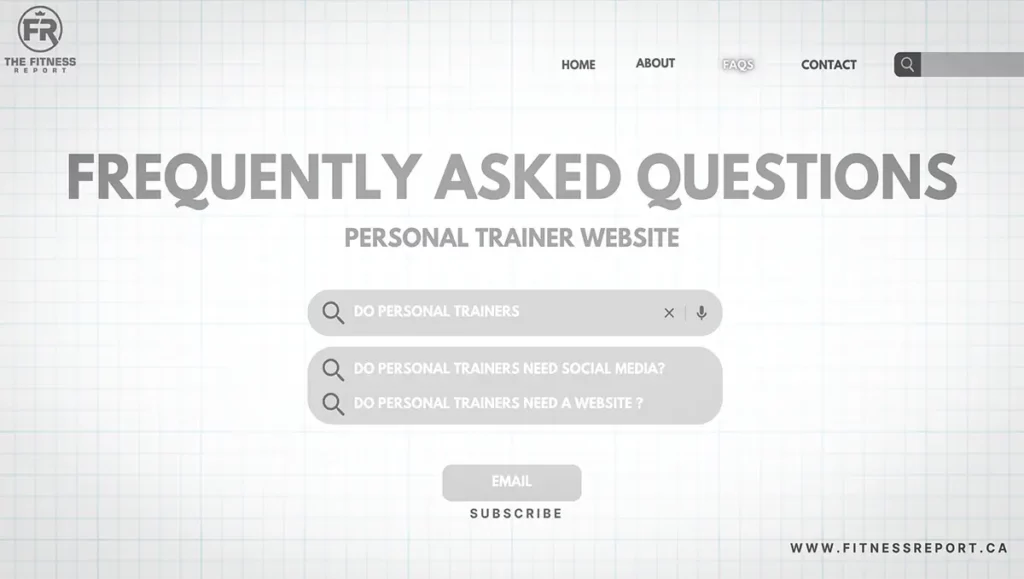Personal Trainer Website: The Best Personal Training Websites On The Net!
- Do Personal Trainers Need A Website?
- Do Personal Trainers Need Social Media?
- Best Personal Training Websites In 2024
- The Seattle Personal Trainer
- Benjamin Stone Fit
- How Do I Create A Personal Trainer Website?
- What Does A Fitness Website Need?
- Personal Trainer Website: Frequently Asked Questions (FAQs)
- Conclusion
In the world of personal training, establishing a strong online presence is essential. While social media can be a powerful tool for promoting your fitness business, it is equally important to have a high-quality website that showcases your expertise and personal training services.
In this guide, I will take you on a journey through the top 10 personal trainer websites in the world 🌎, highlighting the outstanding web platforms that not only inspire fitness but also exemplify the dedication and professionalism of these trainers. Whether you are looking for simple design inspiration or seeking the best trainers in your area, you are in the right place.
Do Personal Trainers Need A Website?
Of course they do, it is the same as any other business. There are millions of people looking for health and fitness services, and if you are not on the internet how will they find you? Yes, you can get a lot of clients through referrals but what about all of the other people searching?
If you do not have all your information listed on Instagram, TikTok, or Twitter a website is a great place to have it all. Also on your website you can create high quality blogs, give away e-books, and have a spot for clients to work directly with you.
In essence, social media keeps you in the spotlight, but a personal training website offers the space to provide comprehensive, helpful information and establish a deeper connection with your audience.
Do Personal Trainers Need Social Media?
100% without a doubt, social media is a valuable tool for personal trainers. It can significantly enhance a trainer’s ability to connect with clients and promote their services. Here are a few reasons why personal trainers should consider utilizing social media:
- Client Engagement: Social media platforms provide a space to engage with current and potential clients. You can share workout tips, nutrition advice, success stories, and answer questions, creating a sense of community.
- Brand Building: Social media allows trainers to build their personal brand. Consistent posting and interaction help establish your expertise and credibility in the fitness industry.
- Marketing And Promotion: You can use social media to promote your services, special offers, and upcoming events. It is a cost-effective way to reach a broad audience.
- Content Sharing: Share informative and inspiring content, such as workout videos, healthy recipes, and fitness challenges, to keep your audience engaged.
- Networking: Connect with other fitness professionals, collaborate on projects, and expand your network within the fitness industry.
- Client Testimonials: Encourage satisfied clients to leave reviews and testimonials on your social media profiles, building trust with potential clients.
Best Personal Training Websites In 2024
If you are considering building a personal training website in 2024, here are some exceptional examples that can offer valuable inspiration for your project:
The Seattle Personal Trainer
https://www.theseattlepersonaltrainer.com

Sweat FXBG, a boutique fitness studio located in Virginia, provides a diverse range of fitness options, including HIIT, indoor cycling, barre, rowing, and yoga. The studio’s owners, Carrick and Robin, aimed to go beyond just offering a gym; they wanted to create a unified brand experience.
This vision is clearly reflected in their studio’s vibrant murals, community-oriented instructors, and prominently featured on their website. To ensure consistency with their brand identity, they have leveraged the Wix Branded App. Through the app, clients can enjoy a mobile experience that seamlessly aligns with the studio’s brand even before setting foot in the physical studio.
Benjamin Stone Fit
https://www.athleticbodydesigns.com
- The Optimal Hybrid Fitness Website: The Limit
Hybrid fitness, the fusion of in-person and online workouts, represents the contemporary and future landscape of the fitness industry. The Limit readily embraces this evolving paradigm by prominently featuring their in-person, Zoom sessions (including live Saturday Zumba parties), and on-demand workouts directly on their homepage.
This approach is particularly valuable for businesses with multiple locations or diverse platforms, underlining the adaptability and innovation within the fitness domain.
- Unmatched Digital Fitness Choices: Aly Gray Fitness
Aly Gray Fitness, led by the experienced personal trainer Aly Gray, goes above and beyond to cater to her customers’ diverse needs. Her approach includes an extensive array of online fitness challenges, live sessions accessible through Zoom, a comprehensive video library, an interactive group chat, and a user-friendly mobile app for convenient session bookings (powered by Fit by Wix).
Crucially, these offerings are thoughtfully listed in both the desktop and mobile site menus, ensuring that members can readily explore and choose from their fitness options.
- Supreme Outdoor Fitness Website: Paddle Upright
Paddle Upright, a dedicated paddleboard instruction website, masterfully employs parallax scrolling effects, seamlessly transitioning between page sections in a visually captivating manner. However, this website’s appeal goes beyond aesthetics.
Prospective members can effortlessly book classes, thanks to two distinct website menus for navigation: a conventional menu located at the header and a floating anchor menu positioned to the right. The latter not only aids navigation but also provides visitors with a clear sense of their current location on the extensive, long-scrolling homepage.
- The Ultimate Fun + Function Site: Jolly Bodies
Jolly Bodies sets the gold standard for its vibrant colors and high-energy videos that distinctly convey the brand’s essence—good vibes all around. However, from a business perspective, this website offers far more than just an enjoyable experience.
Visitors can seamlessly book classes, purchase memberships, and even explore a selection of branded merchandise in their online store. Notably, Jolly Bodies positions customer testimonials prominently in the first fold of their site, a savvy strategy for bolstering credibility and building trust with potential clients.
- The Premium Pricing Page: My Fitness Suites
My Fitness Suites, a Cincinnati-based gym, sets the benchmark for a well-structured pricing page. They offer a range of pricing plans, from single-class options to unlimited memberships, each one meticulously detailed to provide clarity on what clients receive for their investment.
Whether it’s a fitness assessment, a personalized diet plan created by a dietitian, or childcare services, My Fitness Suites transparently outlines the benefits of each plan. This approach exemplifies the importance of simplifying pricing options for your fitness business to prevent overwhelming potential clients with decision fatigue and enhance the overall user experience.
- Top Digital Transformation: Stax Cycle Club
Stax Cycle Club, an indoor cycling studio in Canada, undertook a remarkable pivot to digital during the pandemic. Instead of closing their doors, they expanded their reach, drawing in over 600 members from around the world. How did they achieve this feat? By live-streaming free classes to their community, curating a vast video library featuring over 500 videos, and designing engaging fitness journey challenges to keep people motivated.
The impact of this shift is evident in the glowing testimonials featured on their homepage. Clients describe the business as a beacon of light during challenging quarantine times, with videos that are lauded for their high quality, fun factor, and uplifting nature. This transformation showcases the power of embracing digital avenues to thrive in a changing landscape.
- Supreme Brand Bio: Baha Yogi
When crafting your fitness website and establishing your business, there is a fundamental question to address: What do you stand for? Alex Kaufmann, also known as Baha Yogi, expertly addresses this query on her homepage. Kaufmann succinctly conveys her dedication to body positivity as one of her core values, all while infusing her teaching with a modern, contemporary touch.
She deftly outlines her business offerings, encompassing private sessions, workshops, and retreats, maintaining a remarkable level of preciseness. Notably, her homepage exudes a tranquil movement element that powerfully reinforces her brand and message.
- The Finest Chat Experience: CaliFlo Yoga
CaliFlo Yoga Collective, located in Florida, delivers an exceptional chat experience that simplifies the process of booking a class. As soon as visitors land on the website, an informative chat pop-up guides them through the booking process. Their transparent pricing page ensures potential clients can effortlessly locate the package that aligns with their requirements, eliminating any guesswork.
However, in case of any uncertainties, prospective customers have the option to ask questions via the chat feature, effectively erasing barriers between the business and its clients. This approach is invaluable for fostering new-member sign-ups and cultivating seamless interactions.
- Unique Design with Valuable Content: Tony Gentilcore
While the color scheme and layout may not be visually appealing, every other aspect of the website shines. It is a treasure trove of valuable content, with neatly organized blog posts and thoughtfully selected stock photos. What sets it apart is the prominent display of links to the prestigious websites Tony has contributed to, positioning him as an expert in the eyes of potential clients.
Tony offers a range of services and products, all easily accessible via the “Products and Services” section. Whether you are interested in in-person coaching, online coaching, or his various courses, the information is readily available. He also conducts seminars and workshops, a clever way to both educate a larger audience and generate income.
One distinctive feature of his site is the “CORE online” membership area, a clever play on words given the popularity of core workouts and his surname, Gentilcore. If your name allows for a similar wordplay, consider integrating it into your branding to create a memorable and relevant connection with your audience.
How Do I Create A Personal Trainer Website?

Creating a personal trainer website offers a multitude of options, each with its own pros and cons. Here are some approaches you can consider:
Hire A Web Development Agency
- Pros: When you choose a web development agency, you gain access to a full team of professionals, including web designers, developers, writers, and graphic designers. They can bring your vision to life with expertise.
- Cons: This option can be quite expensive due to the comprehensive services provided by the agency. The cost might be a significant factor, especially for those on a tight budget.
Creating A Personal Training Website
Building a personal training website offers various options, each with its own time and effort requirements. The following platforms are popular choices, each with its own pros and cons:
Wix
- Pros: Wix provides an intuitive website builder with a drag-and-drop interface. It is beginner-friendly, allowing you to create a visually appealing site without extensive technical knowledge.
- Cons: While Wix offers great design flexibility, it may have limitations in terms of advanced customization.
Squarespace
- Pros: Squarespace offers elegant templates, making it easy to create a visually appealing website. It is well-suited for those who prioritize aesthetics and seamless user experience.
- Cons: Customization options may be limited, especially for those who want to delve into more memorable design features.
GoDaddy
- Pros: GoDaddy offers a website builder with a range of features and templates. It is a one-stop shop for domain registration, hosting, and website building.
- Cons: While convenient, some users may find the customization options slightly restrictive.
WordPress
- Pros: WordPress is highly flexible and open-source, allowing for extensive customization and functionality. It is ideal for those who want complete control over their website.
- Cons: It has a steeper learning curve and may require technical expertise. You might need to manage hosting and security aspects.
Weebly
- Pros: Weebly is user-friendly and offers a drag-and-drop builder with attractive templates. It is suitable for beginners looking to create a simple, effective site.
- Cons: Advanced customization and complex features may not be as readily available compared to platforms like WordPress.
Web Flow
- Pros: Webflow is a more advanced platform, ideal for those who want complete design control. It offers code-level customization without requiring coding skills.
- Cons: It has a steeper learning curve and may not be the best choice for beginners. Complex websites may require more time to develop.
Ultimately, the choice of platform should align with your goals, technical expertise, and budget. If you prioritize a quick and user-friendly solution, platforms like Wix, Squarespace, or GoDaddy may be suitable. If you seek extensive customization and control, WordPress or Webflow may be better options. Remember that investing time and effort in your website can pay off, as it often serves as a crucial point of interaction with potential clients.
Work With A Freelance Web Designer
- Pros: Freelancers can offer a middle ground between the agency and DIY options. They often provide specialized services at a more affordable cost compared to agencies.
- Cons: The quality and reliability of freelancers can vary, so finding the right one may take time. You may need to coordinate various aspects of the project yourself.
Website Hosting Services
- Pros: Hosting services often provide website building tools and templates. If you are already using a hosting service, this can be a convenient choice.
- Cons: The range of features and customization options can be limited, depending on your hosting provider.
What Does A Fitness Website Need?
A fitness website, especially one catering to personal training and health/wellness, should include essential elements to engage potential clients effectively. Here is what your website needs:
High-Quality Photos
Showcase high-resolution images of yourself and clients demonstrating fitness routines, before-and-after progress pictures, and photos highlighting your facility. Visual proof of your expertise is compelling.
Online Booking System
Implement a user-friendly booking system that allows clients to schedule personal training sessions conveniently. Ensure it is easy to use and provides clear availability information.
Engaging Home Page
Craft an appealing home page that instantly conveys your brand’s essence. Use compelling visuals and concise text to tell your story and capture visitors’ attention.
Compelling Copy
Well-written copy is crucial. Communicate your passion for fitness, your qualifications, and what makes your approach unique. Your website’s text should engage and inform visitors.
Client Testimonials
Share testimonials from satisfied clients to build trust and credibility. Include their experiences and results to showcase your effectiveness.
Blog Or Content Section
Regularly post informative articles or blog posts related to fitness, health, and wellness. Sharing your knowledge can position you as an expert in your field.
Pricing And Packages
Clearly outline your pricing structure and available personal training packages. Be transparent about what prospective clients can expect and the benefits of each option.
Contact Information
Make it easy for visitors to contact you. Include a contact form, phone number, and email address. Offer multiple communication channels for convenience.
Social Media Integration
Link to your social media profiles, encouraging visitors to connect with you on platforms like Instagram, Facebook, or YouTube.
Newsletter Signup
Provide an option for visitors to subscribe to your newsletter, allowing you to nurture leads and maintain engagement.
Frequently Asked Questions (FAQs)
Anticipate common client questions and provide clear, concise answers. This can save time and improve user experience.
Accessibility
Ensure your website is accessible to everyone, including individuals with disabilities. Compliance with accessibility standards is not only inclusive but also legally required in many regions.
Remember, your website is often the first point of contact between you and potential clients. It should not only reflect your professionalism but also make it easy for visitors to learn about your services and take action, such as booking a session. You can always expand and fine-tune your website as your business grows and evolves.
Personal Trainer Website: Frequently Asked Questions (FAQs)

Conclusion
Creating an online trainer or fitness blog and finding your fitness niche are essential steps in building a successful and impactful presence in the fitness industry. Starting a blog allows you to share your knowledge, experiences, and insights with a global audience while also establishing your credibility. Your fitness niche is where your passion and expertise intersect with market demand, enabling you to stand out and serve a specific audience effectively.
Remember that consistency, quality content, and a strong online presence are key to growing your influence and helping individuals on their fitness journeys. Whether you are focusing on strength training, nutrition, yoga, or any other aspect of fitness, your commitment and dedication to your niche will set you on a path to success.

